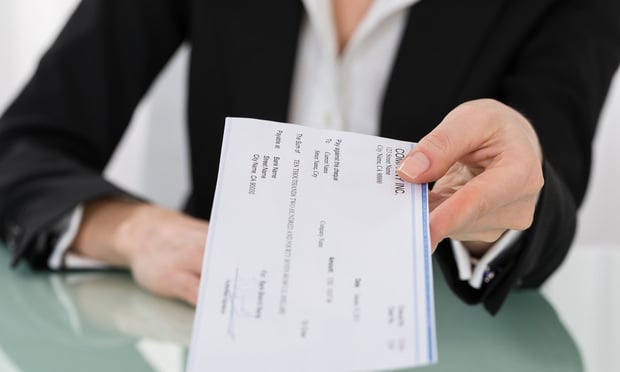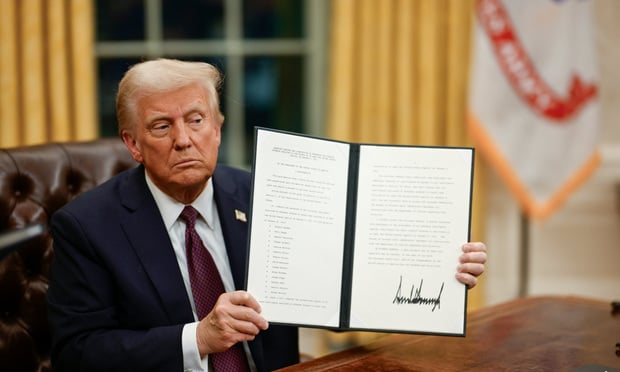Ohio employers could share refunds totaling $861 million if a court decision holding that the state workers' compensation fund overcharged employers is upheld.
Judge Richard J. McMonagle of Cuyahoga County Common Pleas Court (Cleveland) made such a ruling March 3 and will hold a hearing on the decision March 14.
James DeRoche, a partner at Seaman Garson L.L.C., Cleveland, says McMonagle could finalize the decision that day or shortly afterwards.
The decision was a response to a class-action lawsuit first filed in 2007.
In his decision, McMonagle ruled that the Ohio Bureau of Workers' Compensation knowingly charged inequitable rates to some employers.
“ …the evidence that has been established since the preliminary injunction displays that the BWC was aware of the inequity in the system; was aware it was violating the statutory mandate; and was aware that the non-group employers were charged excessive premiums dating back to 1991,” McMonagle says.
“By charging non-group employers excess premiums that the BWC knowingly created inequity, the BWC engaged in a course of conduct that it knew violated the very purpose of the statute,” the judge adds.
“We definitely intend to appeal,” says Bill Teets, BWC communications director. “As far as the group-rating program, it rewards small companies for getting together and maintaining safer workplaces.”
Teets contends, “The decision is based on the concept that BWC fund was enriched by the way the group rating program at the time was set up. We disagree. We don't believe the plaintiffs suffered any harm that entitled them to restitution.”
More than 270,000 of the 300,000 employers in the class defined by the court would get refunds if the decision is sustained, DeRoche and Teets agreed.
DeRoche said that a BWC appeal just to the next highest state-appellate court would delay the refunds for a year; an appeal to the state's highest court would mean the refunds would be delayed up to two years.
“It depends on what the state wants to do,” DeRoche says. “Whether the BWC wants to be stubborn, or whether it wants to pay the people the money back that they are owed promptly,” he said.
DeRoche cites a PowerPoint presentation to the court indicating that the “BWC has a surplus of over $7.9 billion even after taking a contingent liability charge of $854 million due to our lawsuit.”
He says the surplus substantially exceeds the BWC's own guidelines.
But Teets disagrees. He says the BWC maintains its surplus in order to stabilize rates in the face of high-claims years, potential high medical costs and the fact that WC claims have a long tail.
Teets notes that the BWC is currently dealing with some claims dating back to the 1940s.
DeRoche says that some claimants will get perhaps $250, but others up to $50,000, and others up to $1 million. The largest payment will be $1.6 million.
He says 77,000 employers will get more than $1,000, and 50,891 employers stand to get over $2,000.
Teets defended the state. He said that during the period covered by the lawsuit, from July 2001 to June 2009, claims costs for the plaintiffs in the class exceed premiums paid by $861 billion, and the BWC's net assets declined by $2.5 billion.
But DeRoche said that argument “completely missed the point; they are talking at cross-purposes.”
DeRoche says the BWC argument “is completely irrelevant to the issue as to whether they overcharged some employers for the coverage during the period.
Want to continue reading?
Become a Free PropertyCasualty360 Digital Reader
Your access to unlimited PropertyCasualty360 content isn’t changing.
Once you are an ALM digital member, you’ll receive:
- Breaking insurance news and analysis, on-site and via our newsletters and custom alerts
- Weekly Insurance Speak podcast featuring exclusive interviews with industry leaders
- Educational webcasts, white papers, and ebooks from industry thought leaders
- Critical converage of the employee benefits and financial advisory markets on our other ALM sites, BenefitsPRO and ThinkAdvisor
Already have an account? Sign In Now
© 2025 ALM Global, LLC, All Rights Reserved. Request academic re-use from www.copyright.com. All other uses, submit a request to [email protected]. For more information visit Asset & Logo Licensing.








